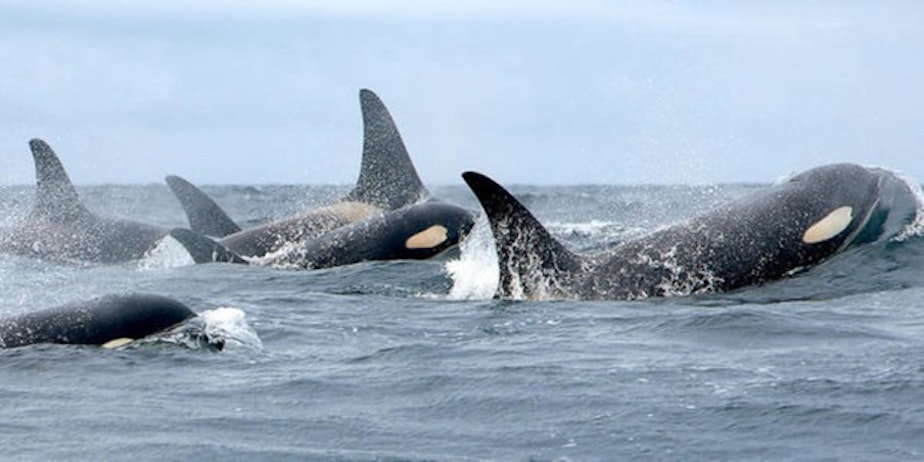Can Genome Sequencing Help Northwest Orcas Recover?

Members of Puget Sound's south resident orca population.
This summer, an orca known as J-35 made national headlines while carrying the body of her dead calf for 17 days in the waters of the Salish Sea.
Her loss gripped the nation and was also a huge blow for the Southern Resident killer whale population. That’s because over the past 30 years the population of these Pacific Northwest orcas has declined 25 percent.
There are now 74 orcas in the population, down from nearly 100 in the late 1990s according to Mike Ford, director of the Conservation Biology Division at the Northwest Fisheries Science Center in Seattle.
“We’re particularly concerned right now because there have not been any successful births in the population since 2015," he told OPB's All Things Considered. "So, obviously if you don’t have new babies coming into the population you can’t recover that population and see it grow.”
The Southern Resident killer whale population has been listed as endangered under the Endangered Species Act since 2005. But even with that protection, their population hasn't recovered and, in fact, has continued to decline.
Scientists identify three major threats to these orcas: a lack of food availability, most notably a decline in the orca’s primary prey Chinook salmon; increasing contamination in the water from chemical pollutants like polychlorinated biphenyls, or PCBs; and disturbances from vessels in the waters where the orcas live.
Those threats can often act together. “For example, one of the reasons why noise is a concern is that it interferes with the killer whale’s ability to successfully hunt fish," Ford said.
But now, scientists are looking into a possible fourth threat: whether genetic factors could be limiting the population's ability to grow. That's why they've launched a new collaboration with a global genomics company called BGI and the nonprofit Nature Conservancy, to sequence the genomes of more than 100 members of the Southern Resident population, from samples collected over the past two decades.
“Understanding whether there are factors that are also influencing the population, may put greater urgency on some of those other factors," Ford said. "And it might open up seriously new ways of treating the population.”
To hear the entire conversation with Mike Ford, use the audio player at the top of this story. [Copyright 2018 EarthFix]



